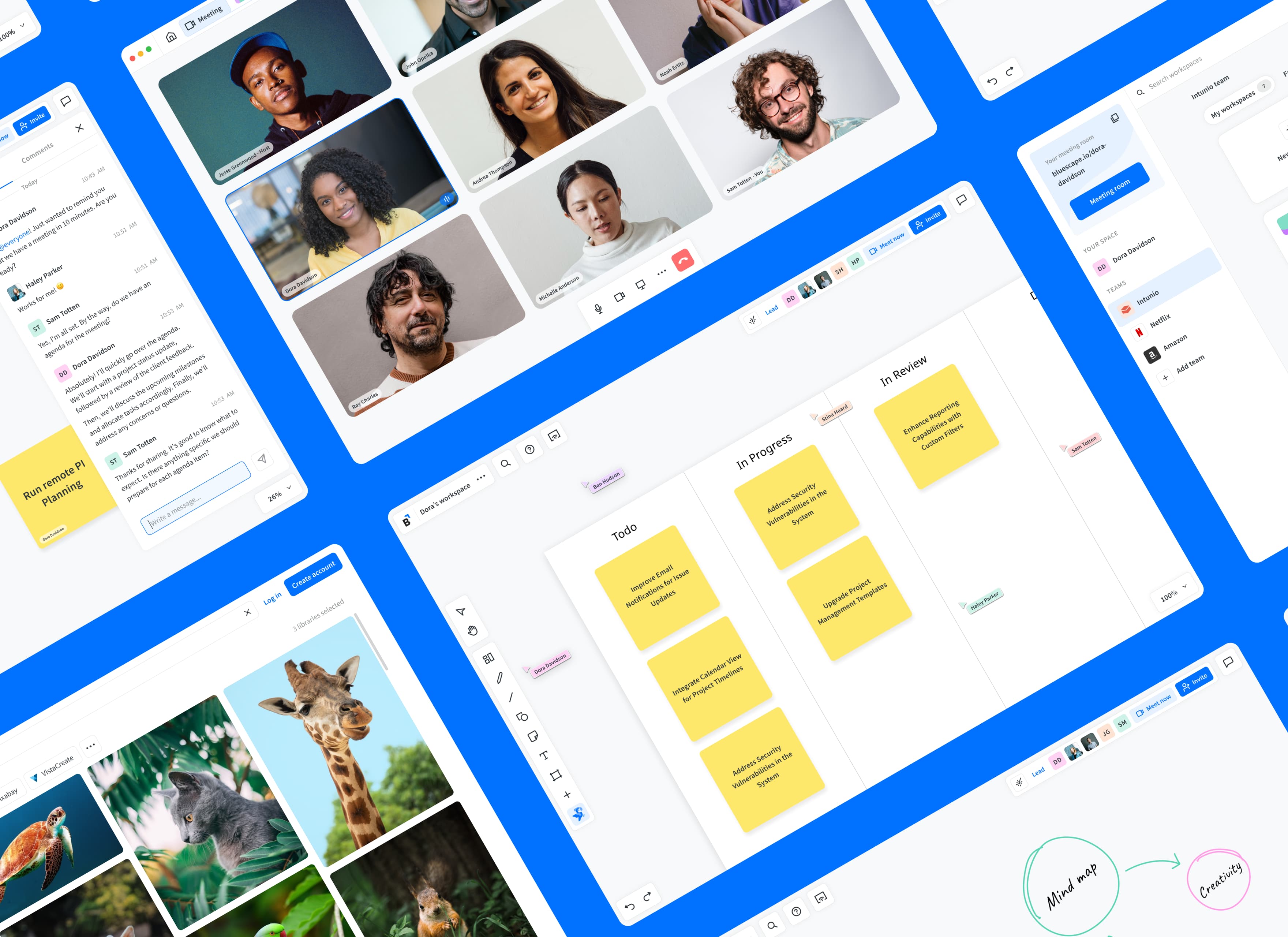Electrolux
Electrolux Shape – A Design System Ahead of Its Time
- Design System,
- Design Audit,
- Design Governance,
- Workshops,
- Enterprise UX,
- UX/UI Design
When Design Systems Were Still Built by Hand
Back in 2018, before Figma, before design tokens and variables, before platforms like Zeroheight or Supernova existed – design systems weren’t something you could buy, subscribe to or plug into a workflow. Sketch and Adobe XD ruled the design world, but they had no shared libraries in the cloud, no version control, no connection to code. If you wanted a design system, you had to build it yourself. From scratch. That’s exactly what Electrolux asked us to do. And it became one of Intunio’s first large-scale design system projects. We didn’t just design colours, components or icons – we built the ecosystem around them: the platform, the structure, the libraries, the process and the organisation that would own and evolve it.
From Fragmentation to a Shared Direction
To begin, we brought design leaders and UX managers from Sweden, Europe, South America and Asia to Stockholm for a four-day workshop. The goal was clear: align on why a design system was needed – and start building it together, not just in theory but in practice.
The most defining moment was a full-scale design audit. Before the workshop, we had printed hundreds of screens and interface elements from Electrolux’s apps and digital products. Once everything was laid out across the tables – more than forty different button styles, conflicting colour palettes, multiple typographic systems, grids and icon styles varying between teams and regions – the fragmentation became undeniable.
At that point, the question was no longer if a design system was needed, but how fast we could build it.
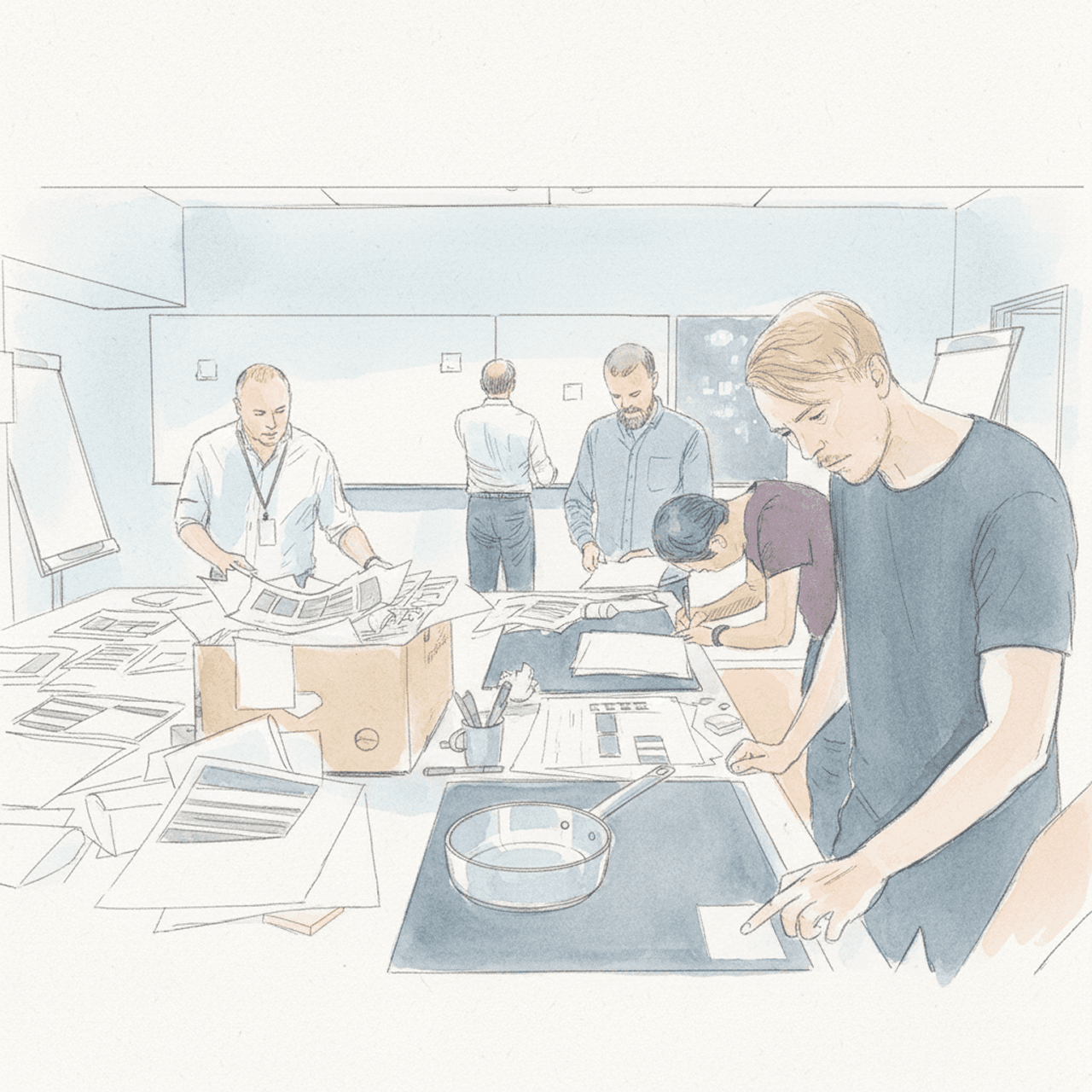
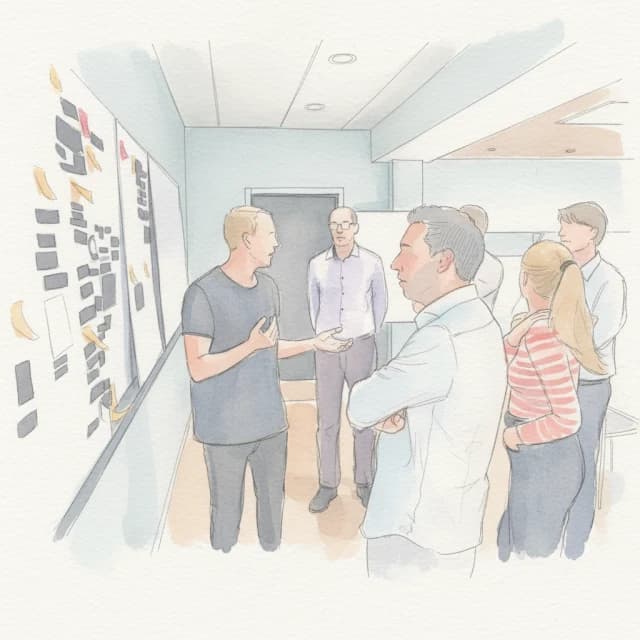
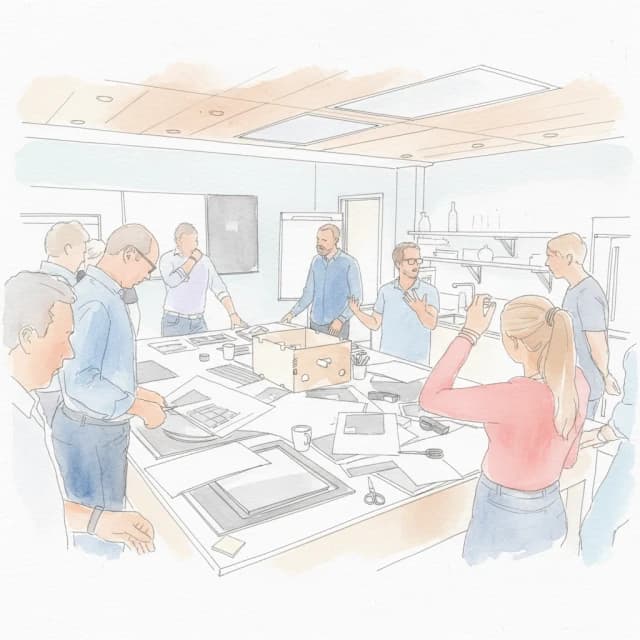
We looked closely at the few public design systems that existed at the time – IBM Carbon, Microsoft Fluent and Google’s Material Design. They showed what a living system could be: components, principles and documentation in one accessible platform. But none of these tools could simply be used inside Electrolux. So we built our own version.We created an internal web-based platform where the entire design system was collected – structure, components, colours, typography, examples and guidelines. Every component had its own page with visuals, interaction states, when to use it and how. The platform was powered by a lightweight CMS, so Electrolux could update and grow it themselves.
In parallel, we developed two complete UI libraries – one in Sketch and one in Adobe XD – because both tools were used globally across the organisation. Each component was built as a symbol with smart overrides, a consistent grid and manually defined spacing and type scales. This was before design tokens existed, but the principle was the same: reusable building blocks, a shared visual language.We also built a searchable icon library with hundreds of icons in multiple formats, so teams around the world could easily find and use them. For the first time, design at Electrolux wasn’t something that lived in isolated files – it became a shared resource.
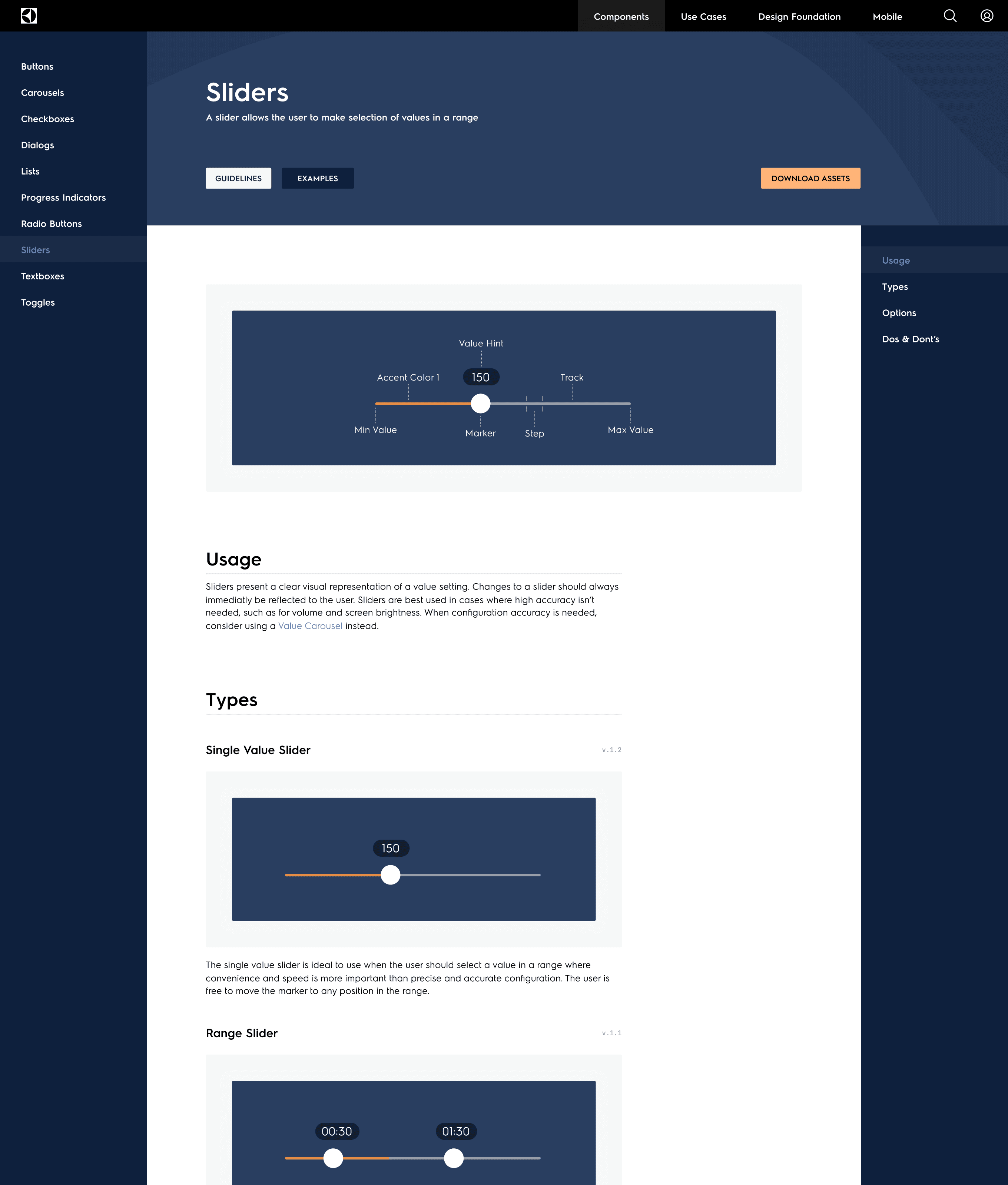
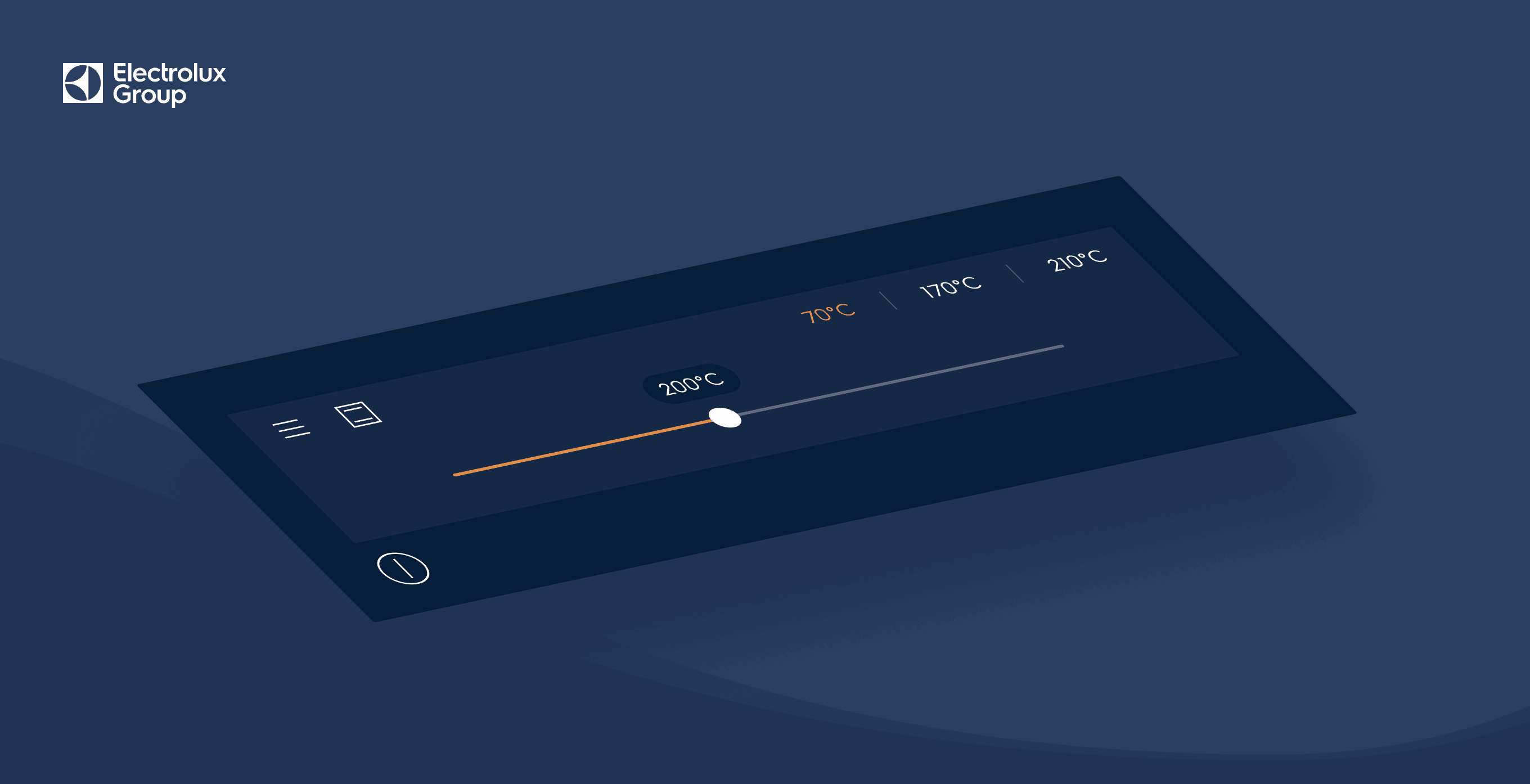
A System Needs Ownership Too
A design system cannot survive if no one owns it. Early in the process, we helped Electrolux establish a core team – with clear roles and responsibilities for approving components, maintaining the library and driving development forward. We also defined a lightweight but structured process: how components should be proposed, documented, tested and published.
At this time, governance in design systems was something only a handful of companies were talking about. In industrial organisations, it was almost unheard of. But without ownership and structure, the system would never make it beyond its first version – so we made it part of the foundation.
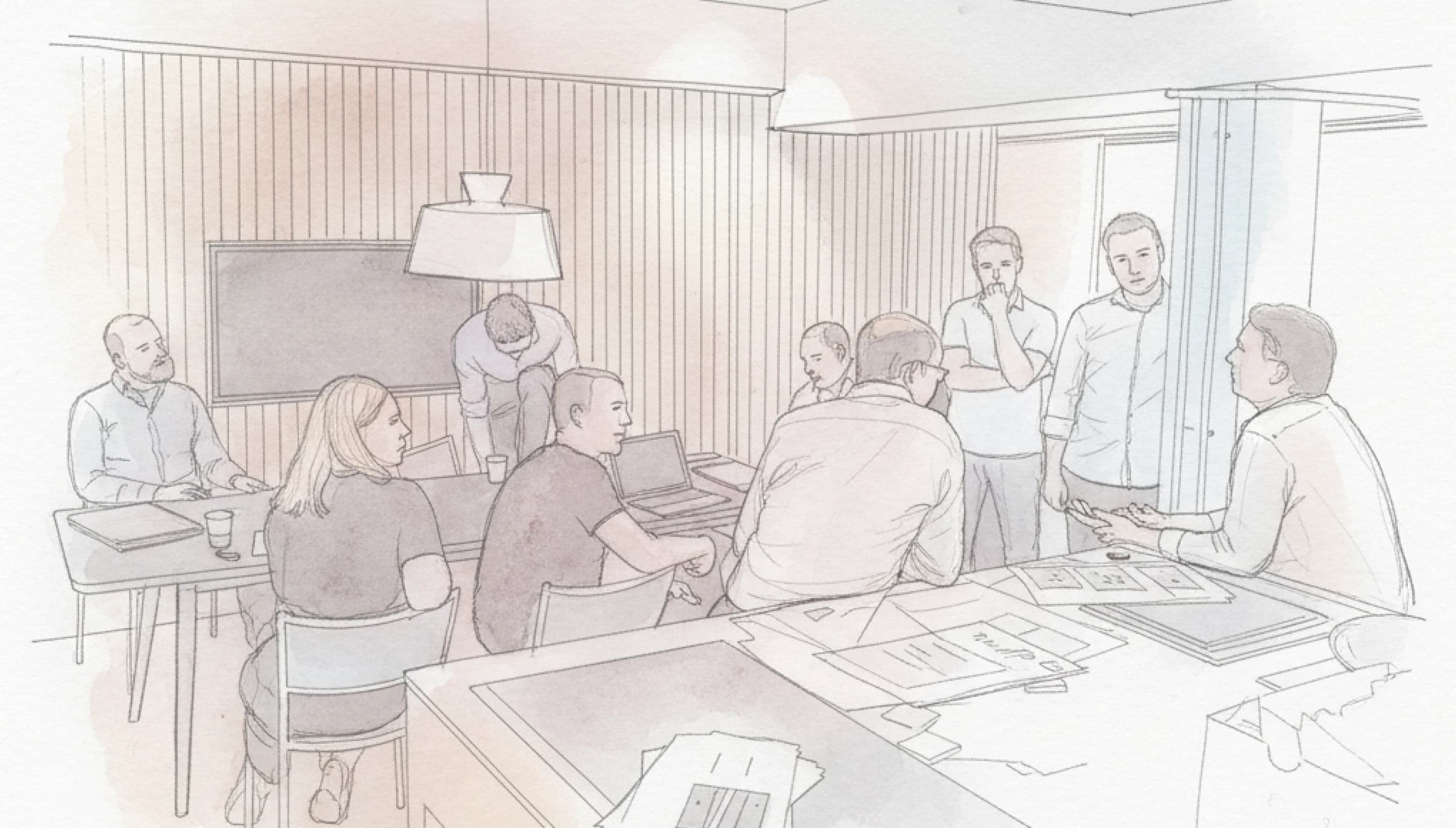
When the first version launched, it was used in real projects. And the results were clear: less duplication of work, fewer inconsistencies and a shared starting point for teams across different markets. This project became the beginning of a longer partnership between Electrolux and Intunio. Over the following years, we continued developing the system together – adding new components, refining structure and documentation, and gradually transitioning into new tools and technologies: from Sketch and XD to Figma, from static libraries to design tokens, variables, themes and code-connected components through Supernova.
In parallel, we supported multiple product teams with prototyping and design work. Thanks to the system, every new initiative could start faster, with higher quality and still feel like part of the same brand.What we built in 2018 wasn’t a fully modern design system – but it laid the foundation. It brought structure where there had been fragmentation, and it proved that an industrial company could work with design at the same level as the world’s leading tech firms.
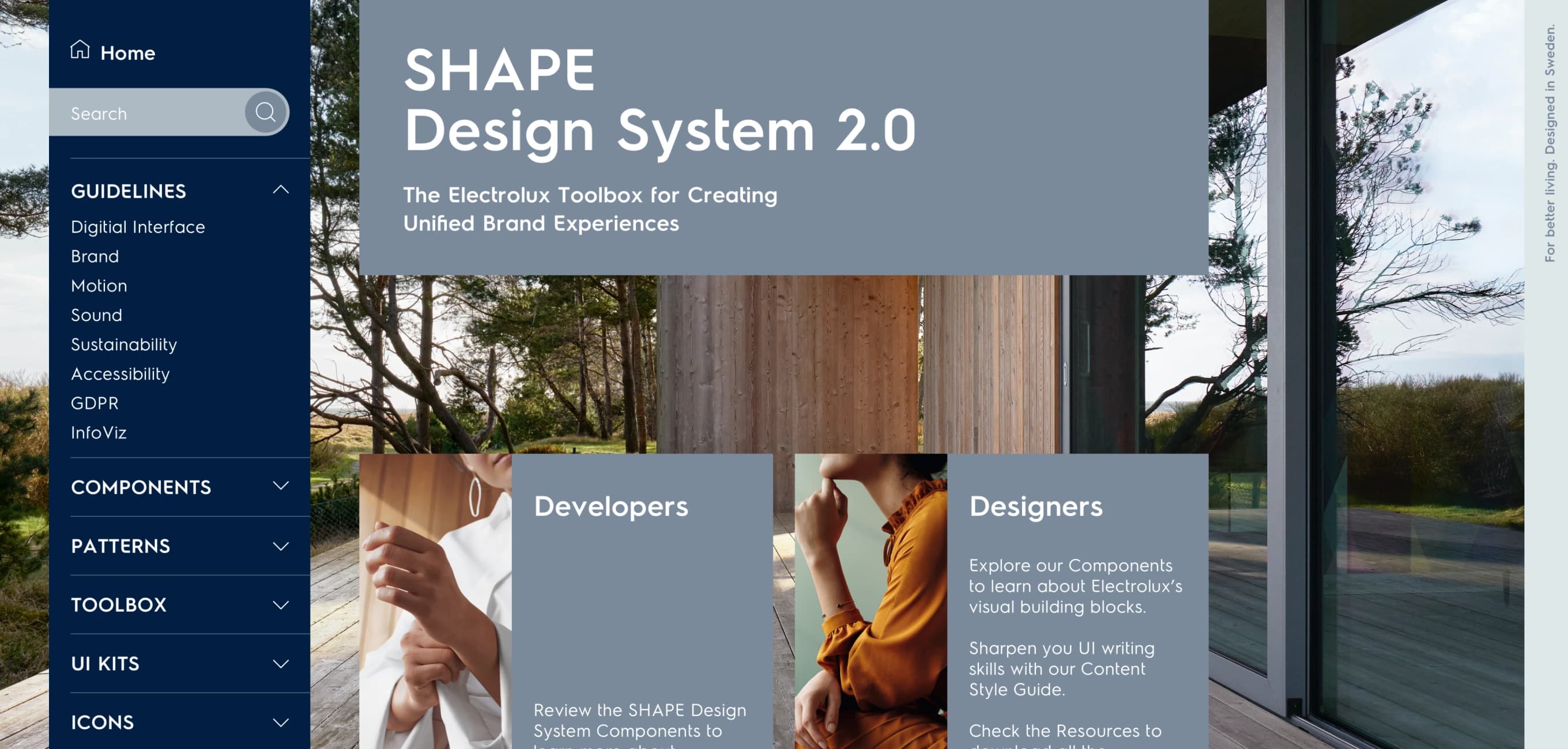
Words from the client
❝ Working with Tobias and the Intunio team was really enjoyable. They were professional, collaborative and always delivered high-quality work. The Shape project became an important starting point for how we developed our design system work at Electrolux, and many of the principles we established together are still relevant today.

Allen Smith
VP Digital & Service Experience, Electrolux
Interested in working with us?
If you have an idea, a project or a challenge you want to explore, we’d be happy to talk. Many of our best collaborations start with a simple conversation.
